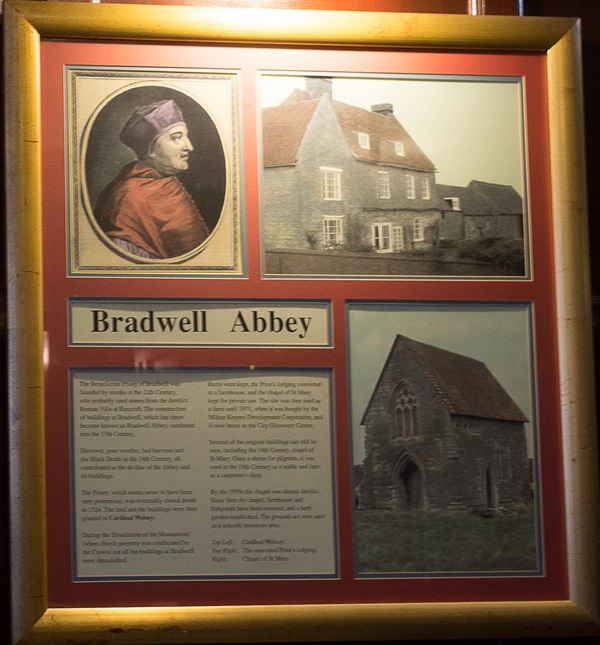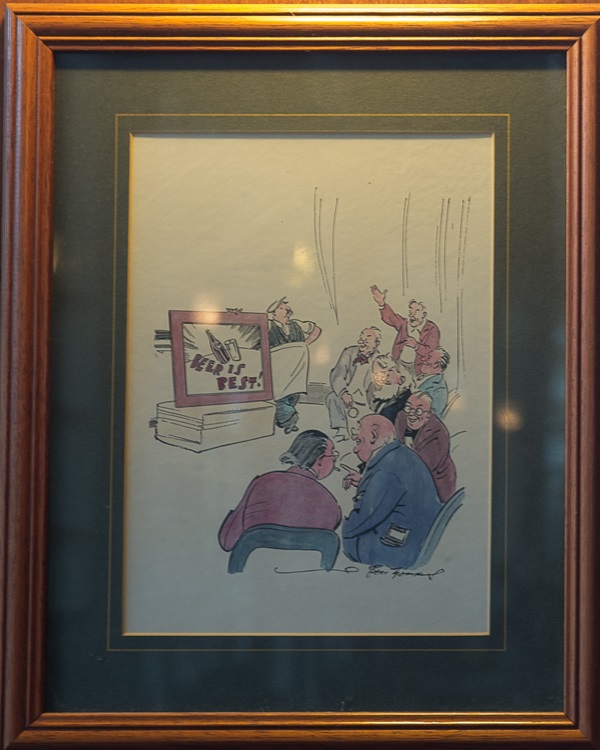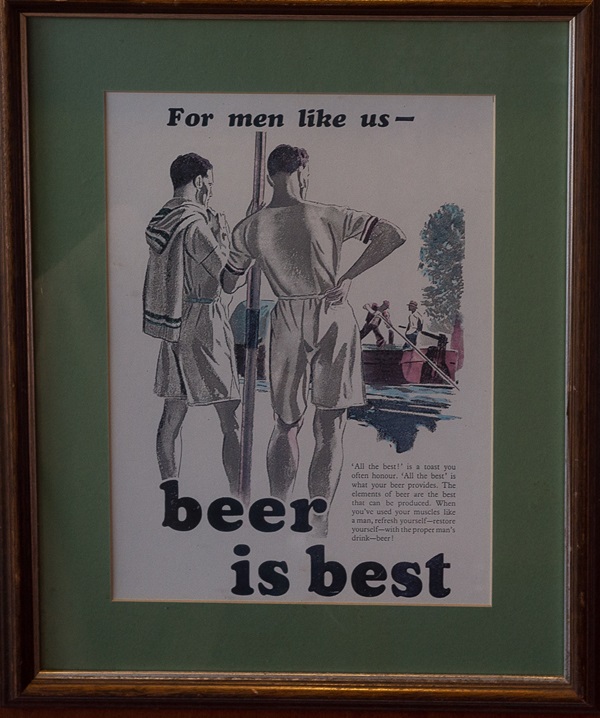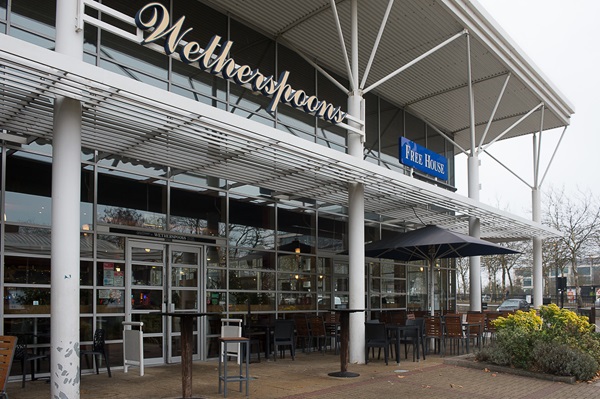When Wetherspoon’s chairman, Tim Martin, opened his first pub in north London, in 1979, he named it Wetherspoons, after a Mr Wetherspoon – his teacher at primary school in New Zealand. The reasoning behind the name is that Mr Wetherspoon was too nice to be running Tim’s particular class and couldn’t control it; Tim thought to himself that, likewise, he couldn’t control his first pub, so considered the name to be appropriate.
Prints and text about Bradwell Abbey.

The text reads: The Benedictine Priory of Bradwell was founded by monks in the 12th century, who probably used stones from the derelict Roman Villa at Bancroft. The construction of buildings at Bradwell, which has since been known as Bradwell Abbey, continued into the 13th century.
However, poor weather, bad harvests and the Black Death in the 14th century, all contributed to the decline of the abbey and its buildings.
The priory, which seems never to have been very prosperous, was eventually closed down in 1524. The land and the buildings were then granted to Cardinal Wolsey.
During the Dissolution of the Monasteries (when church property was confiscated by the Crown) not all the buildings at Bradwell were demolished.
Barns were kept, the Prior’s lodging converted to a farmhouse, and the chapel of St Mary kept for private use. The site was then used as a farm until 1971, when it was bought by the Milton Keynes Development Corporation and is now home to the City Discovery Centre.
Several of the original buildings can now still be seen, including the 14th century chapel of St Mary. Once a shrine for pilgrims, it was used in the 19th century as a stable and later as a carpenters shop.
By the 1950s the chapel was almost derelict. Since then the chapel, farmhouse and fishponds have been restored, and a herb garden established. The grounds are now used as a schools’ resources area.
Top Left: Cardinal Walsey
Top Right: The converted Prior’s lodging
Right: Chapel of St Mary.
A collection of old-style beer adverts.


External photograph of the building – main entrance.

If you have information on the history of this pub, then we’d like you to share it with us. Please e-mail all information to: pubhistories@jdwetherspoon.co.uk